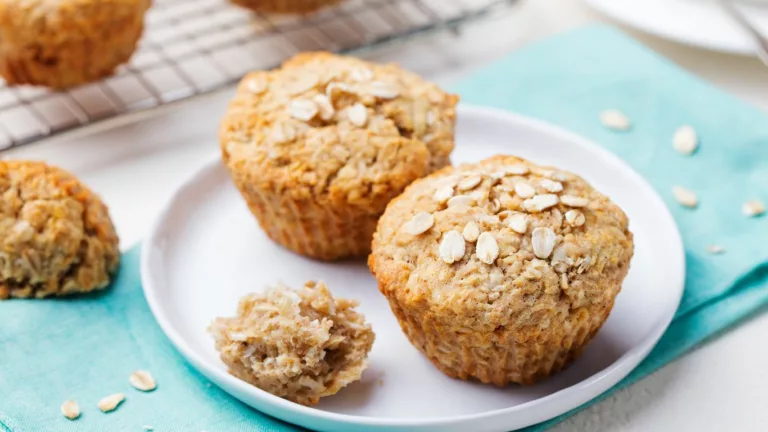How to Reduce Salt Without Sacrificing Flavor: Easy Tips for Tasty Healthy Meals
If you’ve ever tried to cut back on salt, you know it’s easier said than done. As an Internal Medicine Physician specializing in hypertension management, I see patients daily struggling with the delicate balance of reducing sodium without making their meals bland and boring. The truth is, you can reduce salt without sacrificing flavor — and it’s all about being intentional and creative with your ingredients. In fact, learning how to reduce salt without sacrificing flavor isn’t just good for your blood pressure; it’s a game-changer for your overall health and taste buds.
Why Cutting Salt Matters (But Doesn’t Have to Mean Losing Taste)

From my experience in the clinic, high salt intake is one of the top contributors to hypertension, which affects millions worldwide. Yet, when people hear “cut back on salt,” they often imagine tasteless food and immediate sacrifice. Here’s the secret I always share: salt is only one part of the flavor equation. In fact, there are many ways to enhance your meals so you barely miss the salt — and sometimes, you’ll discover flavors you never noticed before!
Why is this so important? Excess sodium leads to fluid retention and increased blood pressure, putting extra strain on the heart and kidneys. When my patients successfully lower their salt intake, many report feeling more energetic, less bloated, and sometimes even seeing improvements in headaches or sleep quality. It’s a lifestyle change with immediate and long-term benefits.
How to Reduce Salt Without Sacrificing Flavor: Practical Tips from a Physician

1. Embrace Fresh Herbs and Spices
One of my favorite go-to tips for patients is to swap salt for fresh herbs and spices. Rosemary, thyme, basil, cilantro, and dill can add vibrant notes that trick your palate into thinking the dish is salty or savory, even when it’s not. If you’re cooking chicken or fish, a sprinkle of smoked paprika or a squeeze of lemon juice can completely transform the taste.
2. Use Acidic Ingredients to Brighten Flavors
Acidic ingredients like vinegar (apple cider or balsamic), lemon, or lime juice bring a zesty punch that can help reduce the need for salt. In my own kitchen, I love drizzling a little lemon juice over roasted vegetables or tossing a salad with a vinegar-based dressing. These bright flavors add depth without adding sodium.
3. Go for Umami-Rich Alternatives
Umami is that savory taste that satisfies your cravings. Ingredients like mushrooms, tomatoes, garlic, and even a small amount of soy sauce (look for low-sodium options) can add this richness to your meals. When I recommend these to patients, they’re often surprised at how satisfying their food feels despite less salt.
4. Cook at Home More Often
Restaurant and processed foods are salt bombs. By cooking at home, you control exactly how much salt goes into your meals. It also encourages experimenting with flavors and ingredients that are naturally low in sodium but high in taste.
5. Gradually Reduce Salt
Going cold turkey on salt can backfire because your taste buds might initially feel deprived. Instead, I advise patients to reduce salt gradually — over weeks or months. This gives your palate time to adjust and often leads to an increased appreciation for natural flavors.
Small Changes, Big Impact
When you start using these strategies, you’ll realize reducing salt doesn’t have to mean dull meals. In fact, it can open the door to new culinary experiences and healthier habits. From a medical standpoint, these small but consistent changes help keep your blood pressure in check and reduce your risk for heart disease.
Next time you’re about to reach for the salt shaker, think about adding a handful of fresh herbs or a splash of citrus instead. Your heart—and your taste buds—will thank you.
Smart Swaps: Alternatives That Keep Your Food Tasty and Heart-Healthy

One of the biggest hurdles I’ve seen among patients trying to reduce salt is feeling like every bite is missing something essential. That’s where smart ingredient swaps come in handy. Over the years, I’ve encouraged people to experiment with alternatives that keep dishes flavorful without the sodium overload.
1. Choose Low-Sodium or No-Salt-Added Versions
It’s simple but often overlooked: always check the labels when buying canned goods, broths, or sauces. Many brands now offer low-sodium or no-salt-added options. Switching to these can drastically cut your daily salt intake without forcing you to reinvent your favorite recipes. For example, a low-sodium chicken broth can be just as comforting as the regular kind but much friendlier for your blood pressure.
2. Experiment with Salt-Free Seasoning Blends
Another personal favorite is making or buying salt-free seasoning blends. I keep a stash of blends with garlic powder, onion powder, smoked paprika, dried herbs, and a pinch of black pepper. These mixes add layers of flavor, making it easier to leave the salt shaker untouched at the table.
3. Swap Soy Sauce for Coconut Aminos
If you love Asian flavors but want to avoid the salt bomb that soy sauce can bring, try coconut aminos. It’s naturally lower in sodium and has a slightly sweet, umami-rich taste that works beautifully in stir-fries and marinades. I’ve had several patients tell me this swap made a big difference in their daily sodium consumption without sacrificing their favorite dishes.
4. Use Nutritional Yeast for a Cheesy Kick
For those who crave a cheesy flavor, nutritional yeast is a game-changer. It’s packed with B vitamins and offers a nutty, cheesy taste that can brighten up popcorn, roasted veggies, and even pasta. It’s also naturally low in sodium, so it’s a perfect salt substitute.
Understanding the Role of Processed Foods in Salt Intake

In my practice, I often ask patients to keep a food diary, and one of the most common patterns is a high intake of processed and packaged foods. These are often loaded with hidden sodium—way more than you’d sprinkle at home. Processed meats, frozen dinners, canned soups, and even some breads can contain shockingly high levels of salt.
Recognizing this hidden sodium is a crucial step in learning how to reduce salt without sacrificing flavor. It’s not just about adding less salt during cooking; it’s about knowing where it’s already sneaking into your diet. Once you become label-savvy and more mindful of what you’re eating, the puzzle pieces start falling into place.
Tips to Reduce Processed Food Consumption
- Meal Prep: Preparing meals in advance means you control the ingredients and salt levels.
- Read Labels: Compare sodium content per serving and opt for lower-sodium products.
- Choose Fresh or Frozen: Frozen vegetables and fruits often have no added salt, making them a great alternative to canned versions.
- Snack Smart: Swap salty chips for unsalted nuts, seeds, or fresh veggies with hummus.
Cooking Techniques That Enhance Flavor Without Extra Salt

Another insight I always share with my patients is that how you cook can make a huge difference in flavor perception. Simple changes in cooking methods can bring out natural flavors and reduce the need for salt.
1. Roasting and Grilling
Roasting vegetables or grilling meats caramelizes their natural sugars, creating a depth of flavor that doesn’t need much salt. Think about how a perfectly roasted bell pepper or charred asparagus tastes—rich, smoky, and satisfying. I often recommend roasting a mix of veggies tossed in a little olive oil and herbs for a side dish that’s both healthy and flavorful.
2. Toasting Spices
Toasting whole spices like cumin seeds, coriander, or fennel in a dry pan before grinding them releases essential oils that boost flavor tremendously. This technique can add complexity to dishes and help reduce reliance on salt.
3. Slow Cooking and Braising
Slow cooking allows ingredients to meld together, intensifying flavors over time. Braised dishes, especially with root vegetables, garlic, and fresh herbs, develop rich taste profiles that satisfy without added salt. I’ve seen many patients enjoy stews and casseroles prepared this way, finding them hearty and flavorful without the sodium overload.
4. Adding Texture
Don’t underestimate the power of texture. Crunchy toppings like toasted nuts, seeds, or crispy shallots can add an exciting contrast that distracts from the absence of salt. Texture keeps meals interesting and can make the flavor experience feel fuller.
In my years managing hypertension, I’ve learned that reducing salt doesn’t mean giving up on flavor or enjoyment. It’s about discovering new ways to season, cook, and savor your food. Small adjustments, smart swaps, and a willingness to experiment can transform your kitchen and your health.
Building Sustainable Habits for Long-Term Salt Reduction Success

From my time working with patients managing hypertension, I can tell you one thing for sure: the best dietary changes are the ones you can stick with. Reducing salt without sacrificing flavor is not a quick fix—it’s a lifestyle shift. But don’t worry, it’s easier than you might think once you build some simple, sustainable habits.
1. Keep a Flavor Journal
This might sound a bit nerdy, but tracking what flavor combinations work for you can make a huge difference. Write down what herbs, spices, or cooking methods you used and how much you enjoyed the dish. Over time, you’ll discover your personal “flavor favorites” that satisfy your cravings without the need for extra salt.
2. Gradually Introduce New Ingredients
It’s tempting to overhaul your entire pantry overnight, but slow and steady wins the race. Introduce one new herb, spice, or seasoning every week. This approach makes the transition enjoyable and less overwhelming. Plus, you get to explore exciting flavors without pressure.
3. Plan Your Meals Around Fresh Produce
Fresh fruits and vegetables are naturally low in sodium and packed with flavor, fiber, and nutrients. When you center your meals around these, you automatically reduce salt intake. Personally, I advise my patients to try one new vegetable or fruit each week, cooking it in a different way to keep meals interesting.
4. Cook with Family and Friends
Food is social, and cooking with others can motivate you to try new things and share ideas. When patients bring their families into the kitchen, they often report more success sticking with low-salt habits because everyone is involved and supportive. Plus, sharing meals that taste great without extra salt feels like a win for the whole crew.
Mindful Eating: Tuning Into Your Body’s Signals

Another piece of the puzzle I emphasize in my practice is mindful eating. When you slow down and pay attention to what you’re eating—flavor, texture, aroma, and how your body feels—you become more in tune with your hunger and fullness cues. This can naturally reduce the urge to over-season food just because you’re eating quickly or distracted.
When I counsel patients, I encourage them to savor each bite and notice how less salt actually allows other flavors to shine. This practice often leads to greater satisfaction with meals and less craving for heavily salted snacks later on.
Practical Tips for Mindful Eating
- Eat without distractions like TV or phones.
- Take smaller bites and chew slowly.
- Focus on the taste and texture of each ingredient.
- Pause between bites to check in with your hunger levels.
Resources and Support to Help You Along the Way
Changing your eating habits can feel daunting, but remember, you’re not alone. There are plenty of trustworthy resources designed to support your journey toward healthier salt consumption without sacrificing flavor. I recommend consulting credible medical and nutrition organizations for reliable tips and recipes.
- American Heart Association
- Centers for Disease Control and Prevention
- National Heart, Lung, and Blood Institute
- Academy of Nutrition and Dietetics
Accessing guidance from these organizations can provide not only evidence-based information but also practical tools like meal planners and sodium trackers. For anyone living with hypertension or simply wanting to eat better, these resources are invaluable.
Final Thoughts
Reducing salt without sacrificing flavor is entirely doable—and it’s a skill worth cultivating. Whether you’re motivated by health concerns like hypertension or simply want to enjoy your meals in a new way, the tips and strategies I’ve shared come from years of clinical experience and personal cooking adventures. Remember, the journey is about progress, not perfection. Your heart, your palate, and your future self will all thank you for making these thoughtful changes.
Disclaimer
This article is intended for educational purposes and should not replace personalized medical advice. Always consult your healthcare provider before making significant changes to your diet or treatment plan, especially if you have health conditions like hypertension or kidney disease.

Dr. Gwenna Aazee is a board-certified Internal Medicine Physician with a special focus on hypertension management, chronic disease prevention, and patient education. With years of experience in both clinical practice and medical writing, she’s passionate about turning evidence-based medicine into accessible, actionable advice. Through her work at Healthusias.com, Dr. Aazee empowers readers to take charge of their health with confidence and clarity. Off the clock, she enjoys deep dives into nutrition research, long walks with her rescue pup, and simplifying medical jargon one article at a time.






